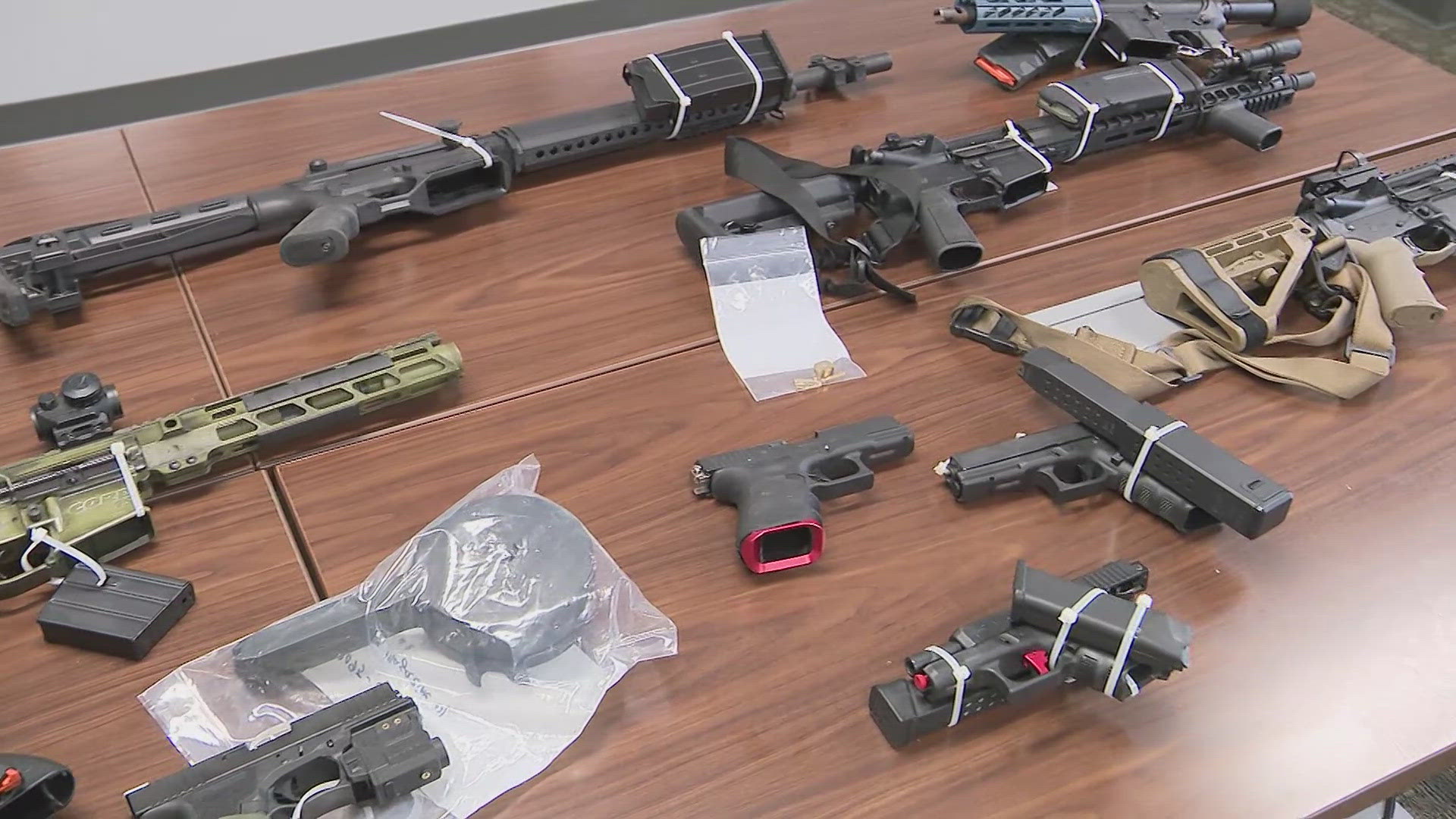ST. LOUIS — In the fight against gun crime, removing stolen guns from the streets is critical. It's a daunting task.
Shannon Hamm, assistant special agent in charge with St. Louis’ Bureau of Alcohol, Tobacco, Firearms and Explosives, gives us an up-close look at their process, from canines to new deadly devices.
“It's something that we're seeing a drastic increase of," said Hamm, referring to illegal devices that convert semi-automatic firearms into fully automatic ones, making them even more dangerous.
“It’s not just a local problem. We see this throughout the country," said Hamm.
Addressing these types of problems is not easy.
Stolen guns
It’s estimated there’s about one gun stolen every 90 seconds in the U.S., according to a survey of thousands of gun owners conducted by the Harvard T. H. Chan School of Public Health and Northeastern University in 2015. Researchers told the I-Team that no one knows exactly how many guns are stolen every year. Researchers said other statistics may reveal lower numbers of stolen guns due to several factors, including the fact that many guns stolen are not reported to police.
Between 2017 and 2021, over a million guns were stolen nationally, according to ATF. A total of 96% of them were from private citizens. A total of 3% were stolen from gun stores. And 1% represented interstate shipment thefts.
Hamm said the vast majority of stolen guns are lost or stolen from people who fail to lock them up. They vanish from homes and cars.
Seattle University School of Law professor Deirdre Bowen, an expert on state-by-state laws regarding gun access, told us the lack of records going to law enforcement is a major issue.
If an individual has their gun stolen, they report that to their local police department, not ATF. That police department enters that information into the Federal Bureau of Investigation’s National Crime Information Center (NCIC). That way if a gun is recovered, the officer would run the serial number by NCIC and it would appear as stolen.
If guns are stolen from gun stores, St. Louis' ATF spokesperson told us that’s when ATF steps in. In the St. Louis area, which includes the city, county, and surrounding areas, there were 12 gun store break-ins between 2023 and 2024, with 38 guns stolen. Of that number, 18 guns have been recovered by ATF officials.
Every year, on average, law enforcement in the St. Louis area traces about 3,000 guns from crimes like shootings. About 98% of those guns are recovered from crimes. Some of them may have been stolen, according to St. Louis ATF. Tracing begins when law enforcement finds a gun at a crime scene and works to find out its origin to investigate the crime.
Challenge with records
There’s a maze of complications that often makes figuring out where guns came from impossible. Federal law only requires licensed gun stores to keep records.
The vast majority of stolen guns—about 96%—are taken from homes and cars, from people not required by federal law to keep records or report guns stolen, according to Erin Kelly, director of research and evaluation with the University of Colorado’s Firearm Injury Prevention Initiative.
“We would always caution everyone to secure their firearms," said Hamm.
There’s also no way to track how many guns a person owns because federal law prohibits the ATF from creating a centralized database. It forces agents to take extra steps to solve crimes, according to University of Colorado’s Firearm Injury Prevention Initiative.
The Gun Control Act of 1968 mandates firearm markings and record-keeping by licensed manufacturers, importers and dealers, ensuring a gun can be traced from the manufacturer to its first sale. But without a national registry, law enforcement officials tell us the onus falls on individuals to maintain their own records.
“We're having to go from the manufacturer to the person who possesses it and trying to figure out what happened in between that," said Hamm.
For now, the fight against gun crime remains an uphill battle, with increasingly deadly firearms and a series of hurdles to track them down.
Nick Wilson, senior director of gun violence prevention with the nonprofit Center for American Progress, told us that Missouri had seen an increase in gun thefts since the permit-to-purchase law was repealed in 2007 and the concealed carry permit requirement in 2017.
“With more people carrying firearms and failing to secure their firearms, gun thefts from vehicles and homes are making it cheaper and easier for prohibited individuals to illegally obtain guns and commit violent crimes," Wilson said. "Tracing firearms recovered at crime scenes is an important service the ATF provides local law enforcement to hold shooters accountable, but gun owners can help prevent shootings from happening in the first place by securely storing firearms unloaded in a gun safe or lock box."

